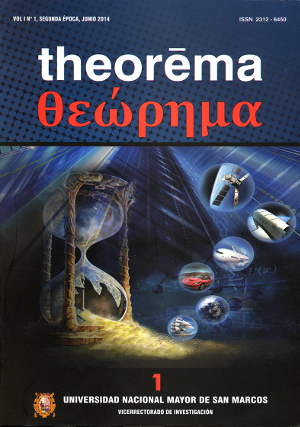Mineralogical characterization of samples with bismuth containing from reservoir Cobriza
Keywords:
Cobriza, copper, bismuth, mineralogy, mineral deposits.Abstract
The research aims mineralogical characterization and determination of bismuth or the presence of bismuth minerals that are associated with copper ores, as they occur in the Cobriza site. The method is polarization microscopy reflected light. As a result of microscopic study, metal ores and the relationships between them were identified in order to meet existing mineral phases in the reservoir. Mineralogical set consists of chalcopyrite, pyrite, arsenopyrite, Löllingite, pyrrhotite, sphalerite, native bismuth, bismuthinite, tennantite, galena, magnetite, hematite, goethite, marcasite, native silver and red silver. The samples studied minerals containing bismuth, which are preferably as bismuth sulfides (bismuthinite) and Bismuth. The native bismuth generally occurs as free grains of smaller sizes to 60 microns; which is altered to bismuthinite having sizes less than 20 microns.Downloads
Published
Issue
Section
License
Copyright (c) 2016 Lourdes Janet Quiñones Lavado, Pedro Miguel Gagliuffi Espinoza

This work is licensed under a Creative Commons Attribution-NonCommercial-ShareAlike 4.0 International License.

Theorema segunda época by Vicerrectorado de Investigación y Posgrado is licensed under a Creative Commons Reconocimiento-NoComercial-CompartirIgual 4.0 Internacional License.
Creado a partir de la obra en http://revistasinvestigacion.unmsm.edu.pe/index.php/Theo/index.
AUTHORS RETAIN THEIR RIGHTS:
a. Authors retain their trade mark rights and patent, and also on any process or procedure described in the article.
b. Authors retain their right to share, copy, distribute, perform and publicly communicate their article (eg, to place their article in an institutional repository or publish it in a book), with an acknowledgment of its initial publication in the Theorema segunda época.
c. Authors retain theirs right to make a subsequent publication of their work, to use the article or any part thereof (eg a compilation of his papers, lecture notes, thesis, or a book), always indicating the source of publication (the originator of the work, journal, volume, number and date).



